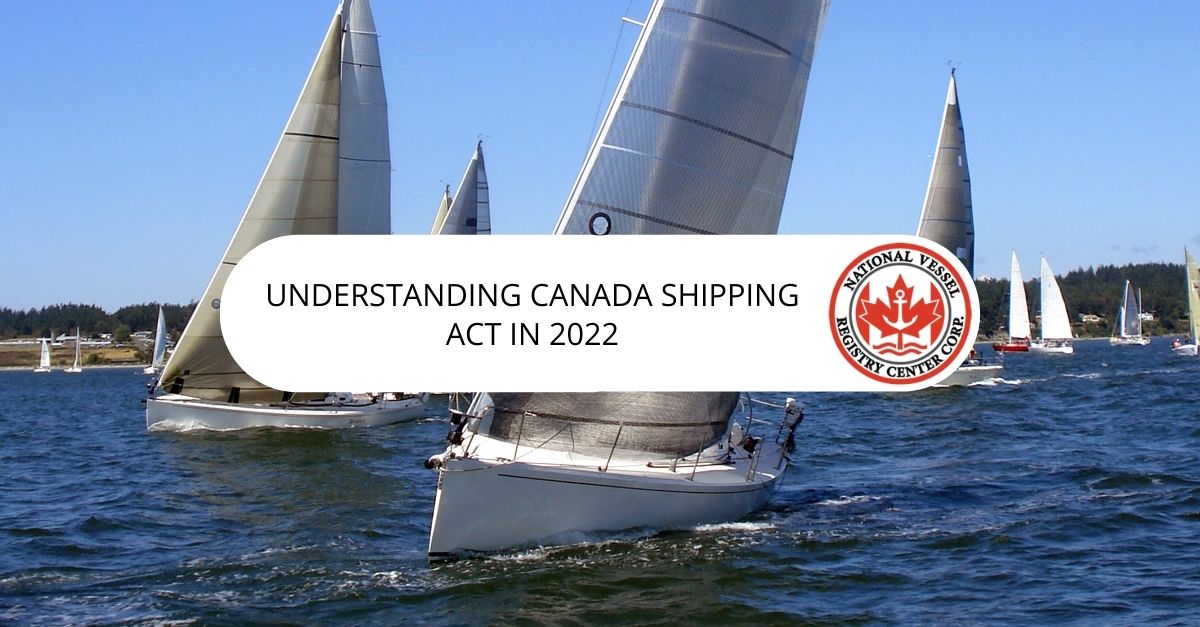As a commercial boater or pleasure craft operator, it’s important to familiarize yourself with Canada’s marine legislation. Therefore, it is especially important to acquaint yourself with the Canada Shipping Act. Below is an overview of the current legislation.
Introducing the Canada Shipping Act
The Canada Shipping Act covers a broad range of topics – important to know if you wish to navigate Canada’s waters. Not only can you get a better insight about marine compliance, you can glean the information needed to legally operate your boat.

Some of the Key Terms
Getting acquainted with the Canda’s Shipping Act will introduce you to specific terms, including references and definitions for authorized representative, Canadian vessel, foreign vessel, and government vessel.
For example, a foreign vessel is any vessel that is not considered a Canadian vessel or pleasure craft while a Canadian vessel is a boat owned and operated solely in Canada.While these terms may seem obvious, it never hurts to clarify their use.
The Act covers gross tonnage, or a vessel’s volume that a tonnage measurer calculates under the Act’s paragraph 77(h).
The master of a boat is the person in charge of a vessel, with the exception of a licensed pilot, per the Act’s Pilotage Act (section 1.1).
The passenger of a vessel is anyone carried on a boat by the boat’s operator or owner. Individuals carried on Safety Convention vessels under a year old are excepted as are guests who are traveling for free on a vessel that is not a Safety Convention boat such as a pleasure craft.
Safety Convention vessels must possess safety certificates and follow certain conventions that ensure the vehicle has been thoroughly inspected and approved for operation.
According to the Shipping Act, a qualified person who owns a boat must be a resident of Canada or a corporation that is incorporated in Canada or one of the country’s provinces.
By reviewing some of the terms used in the Canada Shipping Act, you can better understand how to meet the regulations established for boaters commercially and recreationally. The Act also sets the standards for registration, licensing, and operation.
How the Shipping Act Supports Efficient Marine Transport
These protocols marine transport are based on the purposes of the Act – purposes designed to do the following:
- Protect the health and safety of ship workers and anyone who participates in maritime transportation and trade.
- Promote boating safety for both recreational and commercial use.
- Prevent environmental harm caused by ships and navigation in the nearby waterways.
- Ensure that maritime transportation is efficient.
- Develop a network of maritime cooperation.
- Set up a system of efficient marine enforcement.
Inspections and Authorizations
The crucial parts of the Canada Shipping Act cover inspections and authorizations – rules that the Minister of Transport oversees and enforces.
For instance, the Minister of Transport can authorize a safety inspector to perform an inspection (as set forth in section 211) for the following:
- The ship’s hull (or boat’s body). (Gunwales, or the hull’s upper edges, strengthen the hull. A cross-section of the back of the boat or stern often features an outboard motor inside a transom.)
- Machinery onboard.
- Equipment.
Inspections also are performed to prevent pollution, as established by the Department of Transport and the Department of Fisheries and Oceans. In addition, inspections may extend to protection of the marine environment.
Inspectors can only carry out inspections in accordance with their certifications. Under the Canada Shipping Act, marine safety inspectors are not held liable for anything they overlook or do in good faith.
The Role of the Authorized Representative
The Act stipulates that each Canadian vessel have someone–an authorized representative–responsible for acting on behalf of any matter related to a boat’s operation that is not assigned to another person. The authorized representative is typically the boat’s owner.
If the boat has more than one owner, one of the owners must serve as the authorized representative.
Issuing Maritime Documents
The Canada Vessel Act also covers the issuance of maritime documentation. It gives the Minister of Transport the right to approve or refuse a document, based on the regulations set forth by the Act.
Therefore, any application for a document that relates to registration, licensing, or a bill of sale, for example, must be filled out in accordance with the rules the Minister of Transport has established.
Besides providing specific information, the applicant may have to include supporting documents or declarations to establish issuance. In some cases, inspections are required before the issuance of a document such as a certificate. Some documents will require that an applicant take an exam.
Imposed Fees and Penalties
The Canada Shipping Act also covers fees and penalties for the sole and joint owners of Canadian and non-Canadian vessels.
Review Your Boating Rights
The Canada Vessel Act is designed to create a safer boating system on Canada’s waterways. Use it to help you understand your rights and obligations as a commercial or pleasure craft boat owner and operator. Allow it to be your guide for taking advantage of the online services for registration and licensing featured on the National Vessel Registry.

